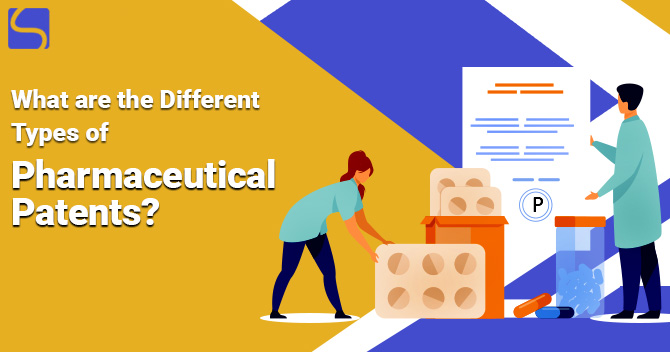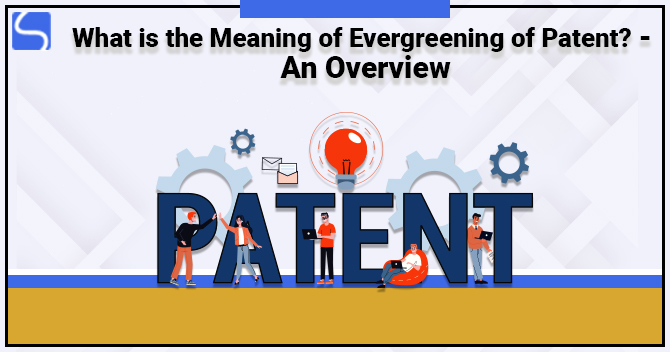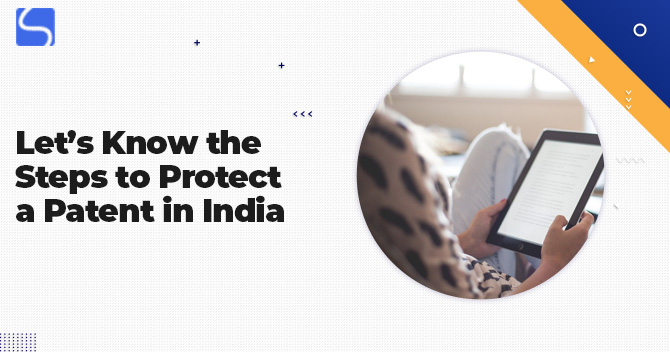What are the Different Types of Pharmaceutical Patents?

Karan Singh | Updated: Oct 30, 2021 | Category: Patent
Nowadays, there is a rapid growth in innovation that needs hard work to bring a drug or a Pharmaceutical compound to the market. Since the money and effort invested in this process are extraordinarily high, it is vital to protect new inventive products in this sector through Patents. Patents allow companies or innovators to avail the benefits of their invention entirely. Hence, businesses running in the Pharmaceutical industry should know the different types of Pharmaceutical Patents through which they can safeguard their innovations sufficiently. In this write-up, we are going to tell you about different types of Pharmaceutical Patents.
Table of Contents
What is a Patent?
Before we discuss different types of Pharmaceutical Patents, let’s first understand the meaning of Patents. A Patent is a form of Intellectual Property, and it can be defined as an exclusive right conferred to the innovator who has invented a new process or product through their intellectual efforts capable of industrial application. Patents are exclusive property rights in intangible creations of human intelligence, and it is awarded in recognition of innovation and, more particularly, the investment required to promote technical progress and the development of new ideas. The Patent holder has the power to exclude others from using, making an offering for sale or selling their invention for 20 years of time.
What are Pharmaceutical Patents?
In today’s era, knowledge is something that will definitely help you to grow your business and get success in your field. Not only do inventors have enormous opportunities to showcase their creativity and ideas, but also significant opportunities to earn economic rewards. For example, people pay more for a mobile or LCD than actually the amount required to create the same. This is because a significant amount of buyer’s money is a reward for inventors for developing or advancing mobiles or TVs.
The above-mentioned factor stands true for pharmaceutical innovations as well. It’s a thoughtful knowledge-driven sector wherein drug development is a process that is expensive, involving billions of dollars. Therefore, it is vital that inventors take out their invested money from the economy. Otherwise, innovation, development & advancement will be hindered. In this respect, Patents play an essential role in protecting invention by giving exclusivity to innovators or inventors over its benefits. In the area of Pharmaceuticals, different types of Pharmaceutical Patents are available for companies or inventors to safeguard and monetise their inventions accordingly.
Types of Pharmaceutical Patents
Following are different types of Pharmaceutical Patents:
- Process Patents: It’s a type of protection for the innovators for a specific manufacturing process. Most of the developing nations like India provide a process Patent Regime to the creators & innovators. In other terms, under this Regime, the protection grant is for a specific manufacturing process & not for the product itself. One may make a similar product with some other process or by simply changing different bounds of the method.
The key advantage of having a process Patent Regime is that the Government has the authority over the monopoly of solid multinational companies, and it can protect the interests of the poor. Hence, the drawback remains that such a regime may discourage pharmaceutical industries from investing their money in an environment characterised by a low-profit margin. Compulsory Licensing is a standard practice in a Patent regime wherein Government can force companies to produce specific products for the benefit of public interest.
- Formulation Patent: This protection claims the pharmaceutical dosage form of the drug, known as a Composition. However, one should not confuse the term “composition” with the Composition of Matter. It is likely that it may obtain the form of a drug formulation or drugs class. Similarly, it can also be a common formulation appropriate to many drugs with various actions. They comprise transdermal patches, slow-release technologies, etc. Moreover, it is essential to take into thought the type of Patent while conductive a detailed Patent search, and it assists in lessening down searches.
- Product Patents: This is one of the essential types of Pharmaceutical Patents. It’s an exclusive right for the actual creator or inventor for a tangible product that they have created. With these rights in place, no other manufacturer can manufacture, create, develop, or provide the same product through a similar or any other process. The infringement of this guideline can lead to Patent Infringement[1]. The majority of developed nations like the UK (United Kingdom), the United States of America (USA), Germany, Canada, and France provide product Patent Regimes to innovators. Likewise, most nations that are signatories to the TRIPS (Trade-Related Aspects of Intellectual Property Rights) Agreement also follow this Regime.
The key benefit of a protect Patent System is that it provides a high level of protection to the innovator. However, the disadvantage is that there are smaller numbers of competitors or opponents in such a Regime. This increases the possibility of monopoly, which can be a big problem in underdeveloped societies where a huge population struggles for basic requirements.
- Product-by-Process Patent or Claim: This expresses a product in terms of the method based to manufacture or producing it. This Patent is granted when the product cannot be differentiated or defined from the prior art except by reference to the process by which the product is manufactured. Even though this Patent is limited & illustrated by the process, the purpose of patentability is based on the product itself and not its production method. Suppose the product in the product-by-process claim or Patent is similar or prominent. In that case, the product-by-process claim will be unpatentable even if the prior product is made via a different process.
Conclusion
In the medical sector, shares of Patents in the total revenue generated are around 70%-80%. That said, Patents define the accomplishment of a drug manufacturer by preventing infringement of their products or processes. Developing a new treatment, the drug requires high cost and thorough research. Protection Patents is a steady method for pharma companies to recover their investments.
Read our article:Plea Filed Against Covid Drug Patent














